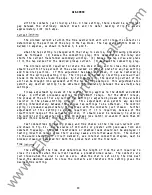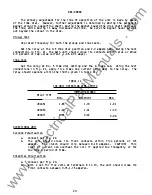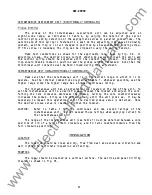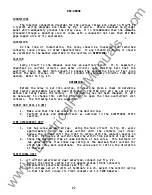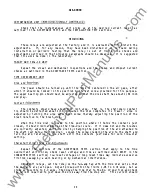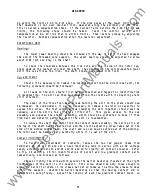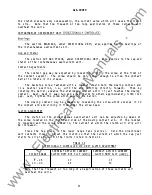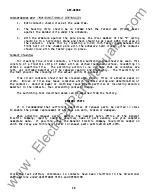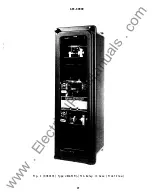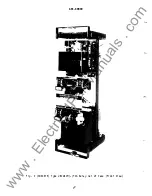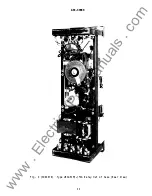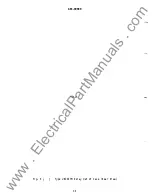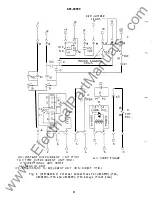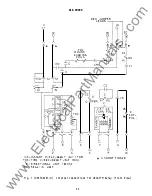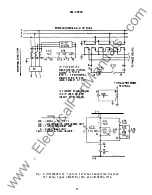
GEK-49849
CONNECTIONS
The internal connection diagrams for the various relays are shown in Fig. 5 to
7. Typical wiring diagrams are shown by Fig. 8 and
9.
Unless mounted on a steel
panel which adequately grounds the relay case, it is recommended that the case be
grounded through a mounting stud or screw with a conductor not less than #12 B&S
gage copper wire or its equivalent.
INSPECTION
At the time of installation, the relay should be inspected for tarnished
contacts, loose screws, or other imperfections. If any trouble is found, it should
be corrected in the manner described in the section on
SERVICING.
CAUTION
Every circuit in the drawout case has an auxiliary brush.
It is especially
important on current circuits and other circuits with shorting bars that the
auxiliary brush be bent high enough to engage the connecting plug or test plug
before the main brushes do.
This will prevent CT secondary circuits from being
opened. Refer to Fig. 20 .
OPERATION
Before the relay is put into service, it should be given a check to determine
that factory adjustments have not been disturbed. The time dial will be set at zero
before the relay leaves the factory. If the setting has not been changed, it will
be necessary to change this setting in order to open the time overcurrent unit
contacts. The following tests are suggested:
TARGET AND SEAL-IN UNIT
1 .
Make sure that the tap screw is in the desired tap.
2 .
Perform pickup and dropout tests as outlined in the ACCEPTANCE TESTS
section.
TIME OVERCURRENT UNIT
1 .
Set tap screw on desired tap.
Using the test circuit in Fig. 21, apply
approximately twice tap value current until the contacts just close.
Reduce the current until the light in series with the contacts begins to
flicker. This value of current should be within five percent of tap value.
2 .
Check the operating time at some multiple of tap value. This multiple of
tap value may be five times tap rating or the maximum fault current for
which the relay must coordinate. The value used is left to the discretion
of the user.
DIRECTIONAL UNIT
1 .
If current polarized or dual polarized, connect per Fig. 22 .
2 .
Adjust the control spring for 0 . 5 ampere pickup (front contacts)
3 .
If potential polarized connect per Fig. 23.
4.
With voltage set at 5 volts at terminals
9
& 10, adjust the control spring
so that the unit closes its front contacts at 1 . 4 ±20% Amperes.
2 2
www
. ElectricalPartManuals
. com












